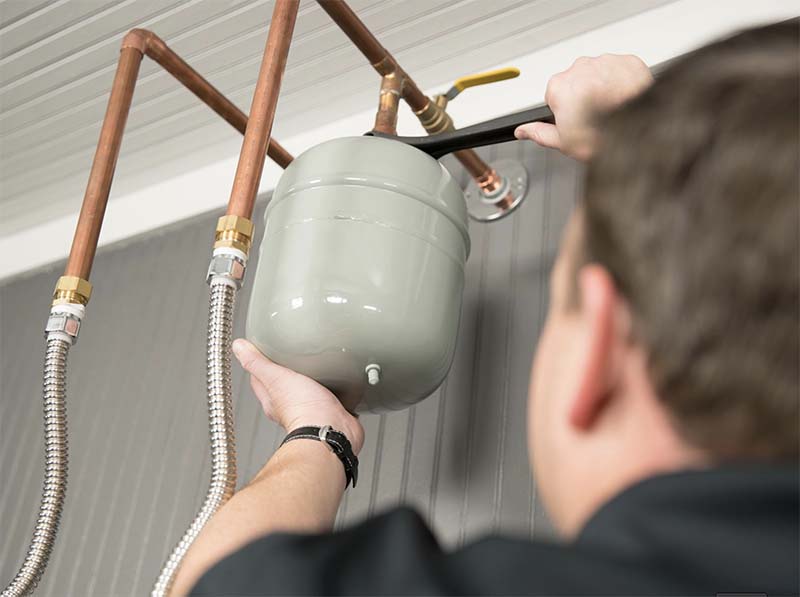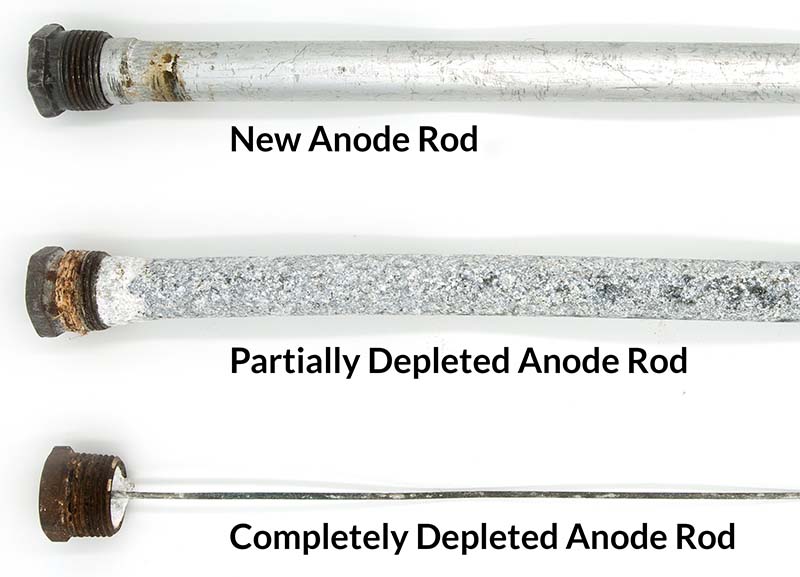There is no recommended season for water heater maintenance, but the subject is top of mind for Goettl Air Conditioning and Plumbing year round. Operating six locations across California, Arizona, and Nevada, this contractor is dedicated to communicating with its customers about water heaters in an effort to avoid unexpected outages.
“The in-home water heater is an often-overlooked major home appliance that can cause extreme inconveniences and potential damage if not maintained properly,” said Zachary Hunt, plumbing business manager at Goettl. “Homeowners want to make sure yearly maintenance is performed as far as flushing any type of sediment that can slow the water heating process down. They also want to make sure that the anode rod in the water heater is good, that it's not degrading or rotting away.”
These are just some of the basics of water heater maintenance. While homeowners may be able to successfully flush their hot water tanks, ensuring proper inspections and functionality should be conducted by a licensed technician. If not already in their services lineup, contractors can consider what Goettl is doing to help educate the customers.
The company has created a new, dedicated water heater team.
“A water heater fundamentally can use a lot of the energy in your house, so when we send these teams, we want to make sure we have someone who is aware of the broad diversity of different pieces of equipment that are used to heat water,” said Hunt. “They're the subject matter experts. We want to protect our client by having the go-to guys on our water heater team who will make the proper diagnostics and provide the options that are best for the customer.”
The new team has been active for just over three months, and Goettl is already seeing a positive response from its customers. With the specific product and maintenance knowledge possessed by the team members about water heaters, Hunt said that the technicians are able to be really granular in educating the customer.
“’Not only are they educating about maintenance, but they are also showing customers what is available in water heater technology and how it can potentially make the customer’s life more convenient, saving them money,” he explained. “With an accurate diagnosis, there are no maybes about what will fix or maintain their water heaters — only certain answers.”
Hunt likened the specialty of the water heater team to a medical specialist.
“You wouldn’t go to a podiatrist for a heart problem; same thing goes for our training,” he said. “We’re going to send customers our subject matter experts that will come back with exact diagnostics. If you don’t start with what’s wrong, it’s impossible to do things the right way.”
Establish Maintenance Schedule
Despite there not being a specific season for water heater maintenance, winter is the highest season of risk for water heaters, according to Jason Leonard, technical training manager, A.O. Smith. Much of this is due to the ground water temperature drop that varies by region.

EXPANSION TANK INCLUDED: “Although not part of the water heater’s own maintenance, expansion tanks also require routine maintenance as their internal rubber bladders lose pressure over time and require recalibration,” said Jason Leonard, technical training manager, A.O. Smith.
“As ground water temperatures drop, the system must work much harder to heat the water,” he said. “This means longer and more frequent heating cycles that cause additional stress on the tank and other components. Colder ground water temperatures could also lead to an increase in thermal expansion, which could cause premature tank failure if not properly controlled.”
The calls a contractor receives about water heater performance, however, may not have anything to do with lack of maintenance or overall unit failure. Sometimes, it is the dilution rate that is directly affected by the incoming ground water.
“For every gallon of hot water removed from the system, a gallon of cold water must take its place,” said Leonard. “This dilutes the hot water stored in the insulated tank. The colder the incoming water is, the greater the dilution rate, leading to shorter shower times and more frequent heating cycles. In the summer, when ground water temperatures are much higher, this dilution is far less significant.”
A.O. Smith recommends that contractors establish and follow a routine maintenance schedule with their customers to maximize a water heater’s lifespan as well as optimize its performance and minimize the risk of damage caused by water leaks (see sidebar).
“Routine maintenance should also include various visual inspections for leaks and proper operation,” said Leonard. “The manual should always be consulted when establishing any routine maintenance plan.”
He cautioned technicians to also consider the expansion tanks in a system.
“Although not part of the water heater’s own maintenance, expansion tanks also require routine maintenance, as their internal rubber bladders lose pressure over time and require recalibration,” he explained. “Coordinating the maintenance of both items should ensure proper functioning of the hot water production system.”
Energy Saving Future
Regular maintenance can save customers money from premature water heater failure and potential water damage. It can also help save a customer the expense of added energy usage. Energy usage has become a key consideration for many homeowners due to its cost to their wallets, as well as to the environment.
“One of the simplest ways to reduce the energy costs associated with a water heater is to appropriately manage the temperature settings,” said Louise Prader, senior director of product management, Bradford White Corp. “Another easy step is to look at all the fuel options in your area and identify the best value for you. It’s also very important to make sure the equipment is up to date and properly sized for the home it’s in and the amount of hot water a family consumes.”
Along with increased consumer demand, increased government standards are driving water heaters to continue to become more energy efficient, accord to Prader. She expects this trend will continue in the years ahead.
“Green solutions will continue to drive industry trends as equipment evolves to meet and exceed government standards and regulations, especially in regions like California and the Pacific Northwest,” said Leonard. “The push for decarbonization and electrification is already underway, and our teams are continuously working on new products and product enhancements to maximize energy efficiency.”
To help with this energy savings, a newer trend is emerging with water heaters — increased connectivity.
“This can mean greater control over water heater performance and settings by homeowners, but it also allows service contractors to monitor the water heater and perform diagnostics remotely,” explained Prader. “There is also a movement by some state and local governments to mandate the adoption of grid-enabled water heaters that can be remotely controlled by utilities to reduce demand on the grid at peak times.”
Three Simple Steps
For traditional tank-style water heaters, whether gas or electric, there are three steps that should be conducted at least annually, or more frequently as called for in the unit manual:
• Check anode rods – The anode rod is a consumable metal rod that is the heater’s first and primary line of defense against tank corrosion. If the anode is not replaced before it becomes depleted, the tank will corrode and eventually leak. We recommend anode rods be checked six months after installation and annually or more frequently if needed after that. Soft water can contribute to faster depletion times and homes with soft water or water softening equipment may need to check more often.

• Flush and drain the tank – Flushing and draining the heater tank periodically allows the system to drain out any sediment and mineral deposits that have accumulated over time. For electric units, this process involves removing heating elements and inspecting them for scale build up. Routine removal of scale and sediment deposits extends the life of the heater and allows it to operate at optimal efficiency.

• Run the T&P valve – The T&P relief valve should be operated manually to ensure that waterways are clear and the valve mechanism moves freely on an annual basis. If water does not flow freely, the valve should be replaced. Scale and mineral deposits can block and stick to the valve and prevent it from operating properly.
-SOURCE — A.O. Smith Water Heaters










